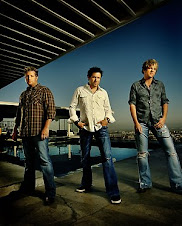Interesting Facts:
Bernard John “Bernie” Taupin was born at Flatters, a farm house, between the village of Anwick and Sleaford in the southern part of Lincolnshire, England.
Taupin's mother and his maternal grandfather "Poppy" taught him an appreciation for nature and for literature (particular narrative poetry), both of which inform his early lyrics.
As a child, he had an intense interest with the American Old West.
In 1967, he answered an advertisement for talent placed in the New Musical Express by Liberty records A&R man Ray Williams.
He began to collaborate with Elton John in 1967 and wrote songs for him.
Taupin's lyrics include such memorable tunes as "Rocketman", "Tiny Dancer, "Candle in the Wind, "Don’t Let the Sun Go Down on Me", "Daniel", and 1970's "Your Song", their first hit.
Together, Bernie Taupin and Elton John have collaborated on 30 albums together.
Taupin has been married four times, Maxine Feiblman 71-76, Toni Russo 79-91, Stephanie Haymes 93-98, and Heather Lynn Hodgins Kidd 04-present.
Has two daughters with Heather, named Charley Indiana and Georgey Devon.
Taupin and John’s next album is due out in 2010.
Timeline:
1950- Bernard John “Bernie” Taupin was born on May 22 at Flatters, England.
1950-1967- Taupin attended Catholic Schools, however began partying before age18. He worked part time meaningless jobs.
1967- Taupin answered an advertisement and thus at age 17 began his collaboration with singer Elton John.
1967-1977- Taupin wrote numerous songs for John such as their number one hit “Your Song” in 1970.
1977-1979- Taupin took a short break from working with John and began to collaborate with other artists.
1980-1991- Taupin resumed work with John, and wrote hits such as "I'm Still Standing," "I Guess That's Why They Call It The Blues" and "Sad Songs (Say So Much)."
1990-2000- Taupin wrote more hits including "The One," "Simple Life," "The Last Song" and "Believe."
1991- Taupin and John starred in a film documentary “Two Rooms” which described the John/Taupin writing style, which involves Taupin writing the lyrics on his own and John then putting them to music, with no further interaction between the two. This however was a process that was to change considerably over the years as their collaborations became far more intimate in their work.
1997- Taupin rewrote his lyrics for "Candle in the Wind" to memorialize Diana, Princess of Wales, shortly after her death in a car accident on Aug. 31 of that year.
2006- Taupin and John had their first Broadway musical open in March 2006 with Lestat: The Musical.
2007- On 25 March, Taupin made a surprise appearance at John's 60th birthday celebration at Madison Square Garden, discussing their 40-year songwriting partnership together. John told the audience that without Taupin there probably wouldn't be an Elton John as the public has come to know him.
2008- present- Taupin and John are currently working on their next album together.
Song Analysis:
Bernard John “Bernie” Taupin is famous for his beautiful lyrics to almost all of Elton John’s smash hits. John has described Taupin’s importance by saying that without Taupin there probably wouldn't be an Elton John as the public has come to know him. Taupin has collaborated on more than thirty albums with John with so many hits that one cannot remember them all by name. One of Taupin’s best hits arguably is the song “The One” off the 1992 album titled “The One”. I chose this song because it has always been one of my favorite songs by Elton John and I had no idea before that John had not written it but rather his partner Bernie Taupin. Taupin’s “The One” features many poetic devices that helps capture the image of what love means within the lyrics. The song begins with a man watching a woman dancing in the ocean and running through the soft sand. This example of imagery helps the reader observe that this woman is care free and gentle spirited. Taupin goes on to say that she is “A spirit born of Earth and water”. This is an example of hyperbole because Taupin is over exaggerating that point that this woman is pure and resembles beauty in nature. Taupin agrees that when you truly love someone “The hammer hits” and “The pieces finally fit”. These are both examples of alliteration within the lyrics. In the chorus Taupin writes, “When stars collide like you and I, no shadows block the sun”. This is another illustration of hyperbole because people do not actually collide like stars. He is trying to say that the connection between he and this woman is so strong and powerful that it sheds light onto the world. Taupin adds that for each man that is in a state of confusion, “Until he walks along the beach and sees his future in the water, a long lost heart within his reach”. These lines contain many poetic devices such as more alliteration when he says “long lost heart”. Furthermore, there is more hyperbole because no one can literally see their future in the water. Taupin is illustrating that when you love someone so much they are the most important influence in your future and you have to reach out and grab them when you can.
Contributions:
Bernie Taupin is perhaps one of the greatest songwriters of all time. Almost everyone can relate to the lyrics in his songs whether about love or hardship. Elton John songs are on the radio every day, and most people can sing lyrics to his most popular songs. John brings the music to life, but Taupin is the man with the pen and paper writing the lyrics down as the first step to an excellent song. Everyone should know that Bernie Taupin is a genius lyricist whose songs are universal.
About Me
Subscribe to:
Post Comments (Atom)







No comments:
Post a Comment